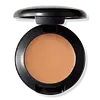What's inside
What's inside
 Key Ingredients
Key Ingredients

 Benefits
Benefits

 Concerns
Concerns

 Ingredients Side-by-side
Ingredients Side-by-side

Water
Skin ConditioningPhenyl Trimethicone
Skin ConditioningTrimethylsiloxysilicate
EmollientMethyl Trimethicone
Skin ConditioningGlycerin
HumectantC9-12 Alkane
SolventNiacinamide
SmoothingButylene Glycol
HumectantNeopentyl Glycol Diheptanoate
EmollientAscorbyl Glucoside
AntioxidantLauryl PEG-9 Polydimethylsiloxyethyl Dimethicone
Skin ConditioningSilica
AbrasiveOlea Europaea Fruit Oil
MaskingSimmondsia Chinensis Seed Oil
EmollientHydrogenated Polyisobutene
EmollientPolysilicone-11
Hydroxyethyl Urea
HumectantAlgae Extract
EmollientTocopheryl Acetate
AntioxidantSodium PCA
HumectantHelianthus Annuus Seed Extract
Skin ConditioningCaffeine
Skin ConditioningSodium Hyaluronate
HumectantHordeum Vulgare Extract
EmollientTrametes Versicolor Extract
Cucumis Sativus Fruit Extract
EmollientPEG-10 Dimethicone
Skin ConditioningPropylene Glycol Dicaprate
EmollientSorbitol
HumectantCaprylyl Glycol
EmollientTrehalose
HumectantTriethyl Citrate
MaskingDipotassium Glycyrrhizate
HumectantSalicylic Acid
MaskingSodium Chloride
MaskingVinyl Dimethicone/Methicone Silsesquioxane Crosspolymer
Triethoxycaprylylsilane
Disteardimonium Hectorite
StabilisingAmmonium Acryloyldimethyltaurate/Vp Copolymer
Dimethicone/PEG-10/15 Crosspolymer
Alumina
AbrasiveLecithin
EmollientZinc Stearate
Cosmetic ColorantPropylene Glycol Caprylate
Skin ConditioningSodium Hydroxide
BufferingSodium Citrate
BufferingLaureth-7
EmulsifyingSynthetic Fluorphlogopite
Magnesium Aluminum Silicate
AbsorbentHexylene Glycol
EmulsifyingDisodium EDTA
Citric Acid
BufferingDipropylene Glycol
HumectantTin Oxide
AbrasiveResveratrol
AntioxidantPhenoxyethanol
PreservativePotassium Sorbate
PreservativeCI 77891
Cosmetic ColorantCI 77492
Cosmetic ColorantCI 77491
Cosmetic ColorantCI 77499
Cosmetic ColorantWater, Phenyl Trimethicone, Trimethylsiloxysilicate, Methyl Trimethicone, Glycerin, C9-12 Alkane, Niacinamide, Butylene Glycol, Neopentyl Glycol Diheptanoate, Ascorbyl Glucoside, Lauryl PEG-9 Polydimethylsiloxyethyl Dimethicone, Silica, Olea Europaea Fruit Oil, Simmondsia Chinensis Seed Oil, Hydrogenated Polyisobutene, Polysilicone-11, Hydroxyethyl Urea, Algae Extract, Tocopheryl Acetate, Sodium PCA, Helianthus Annuus Seed Extract, Caffeine, Sodium Hyaluronate, Hordeum Vulgare Extract, Trametes Versicolor Extract, Cucumis Sativus Fruit Extract, PEG-10 Dimethicone, Propylene Glycol Dicaprate, Sorbitol, Caprylyl Glycol, Trehalose, Triethyl Citrate, Dipotassium Glycyrrhizate, Salicylic Acid, Sodium Chloride, Vinyl Dimethicone/Methicone Silsesquioxane Crosspolymer, Triethoxycaprylylsilane, Disteardimonium Hectorite, Ammonium Acryloyldimethyltaurate/Vp Copolymer, Dimethicone/PEG-10/15 Crosspolymer, Alumina, Lecithin, Zinc Stearate, Propylene Glycol Caprylate, Sodium Hydroxide, Sodium Citrate, Laureth-7, Synthetic Fluorphlogopite, Magnesium Aluminum Silicate, Hexylene Glycol, Disodium EDTA, Citric Acid, Dipropylene Glycol, Tin Oxide, Resveratrol, Phenoxyethanol, Potassium Sorbate, CI 77891, CI 77492, CI 77491, CI 77499
Ingredients Explained
These ingredients are found in both products.
Ingredients higher up in an ingredient list are typically present in a larger amount.
Alumina is another name for the compound aluminum oxide. It is used as a thickener, absorbent, and abrasive.
As an absorbent, alumina can give a mattifying effect. It is used in mineral sunscreens to help coat nano-sized filters, such as titanium dioxide. By increasing the size of the UV filters, these ingredients stay on the skin for a longer time. By coating small sized ingredients, alumina helps thicken a product.
Alumina may be used as an abrasive, or exfoliant.
Alumina is naturally occurring in the mineral corundum. Certain varieties of corundum create rubies and sapphires. Corundum is also the crystalline form of alumina.
Learn more about AluminaHydrogenated Polyisobutene is a synthetic polymer. Polymers are compounds with high molecular weight. Hydrogenated Polyisobutene is an emollient and texture enhancer.
In one study, Hydrogenated Polyisobutene showed better skin hydration levels than Caprylic/Capric Triglyceride. As an emollient, it helps keep your skin soft and hydrated by trapping moisture in.
Hydrogenated Polyisobutene is often used as a mineral oil replacement.
Learn more about Hydrogenated PolyisobuteneSilica, also known as silicon dioxide, is a naturally occurring mineral. It is used as a fine, spherical, and porous powder in cosmetics.
Though it has exfoliant properties, the function of silica varies depending on the product.
The unique structure of silica enhances the spreadability and adds smoothness, making it a great texture enhancer.
It is also used as an active carrier, emulsifier, and mattifier due to its ability to absorb excess oil.
In some products, tiny microneedles called spicules are made from silica or hydrolyzed sponge. When you rub them in, they lightly polish away dead skin layers and enhance the penetration of active ingredients.
Learn more about SilicaThis oil comes from the seeds of the desert shrub called Jojoba. It is more commonly known as jojoba oil, a non-comedogenic oil.
Jojoba oil does not contain fragrance and has many fatty-acids, making it a great soothing ingredient.
It also contains Vitamin E, a great moisturizing ingredient. Vitamin E is also an antioxidant and protects your skin against oxidative damage.
This ingredient humectant properties, meaning it helps draw moisture from the air. This helps keep your skin hydrated.
While jojoba has antibacterial properties, it is only able to kill some strains of bacteria.
Studies also show it helps in wound healing. In fact, Indigenous cultures have used jojoba as a moisturizer and to help treat burns for centuries.
Fun fact: Jojoba oil similar to natural human skin sebum, so it has a great effect on dry skin. It is also promising with helping to regulate sebum production.
Due to its fatty acid content, Jojoba oil may not be fungal acne safe. We recommend speaking with a professional if you have any concerns.
Learn more about Simmondsia Chinensis Seed Oil